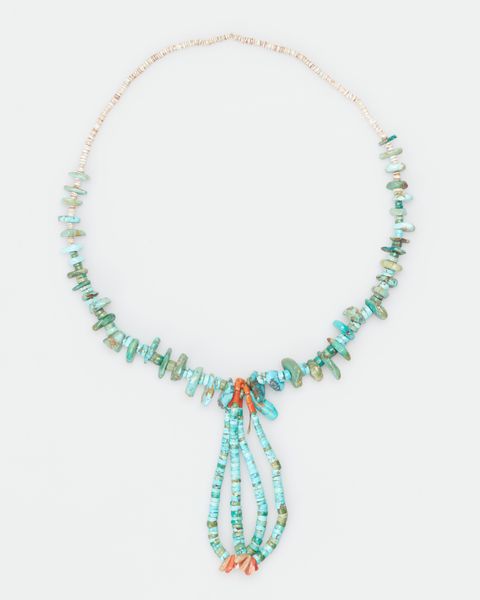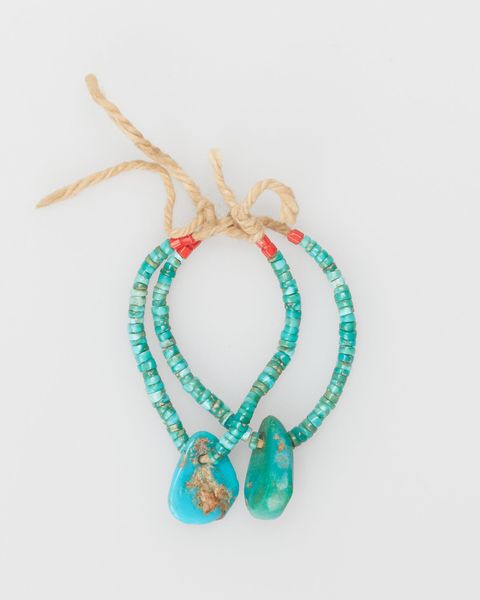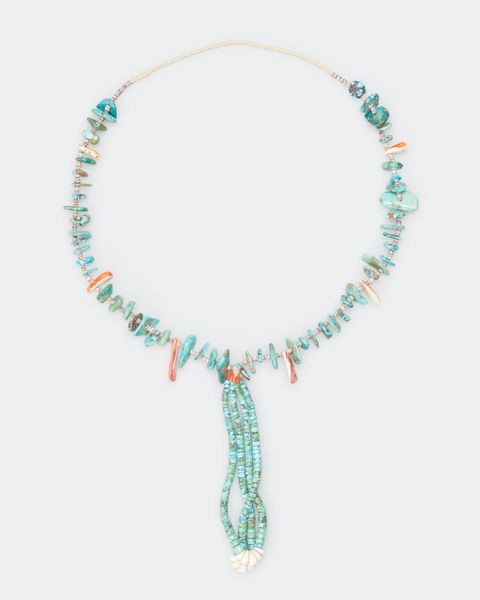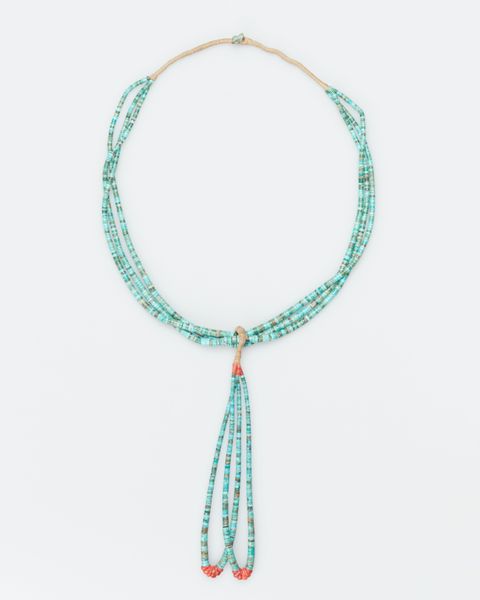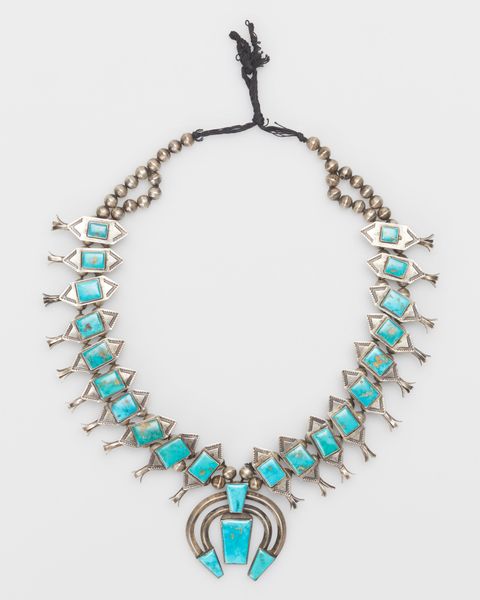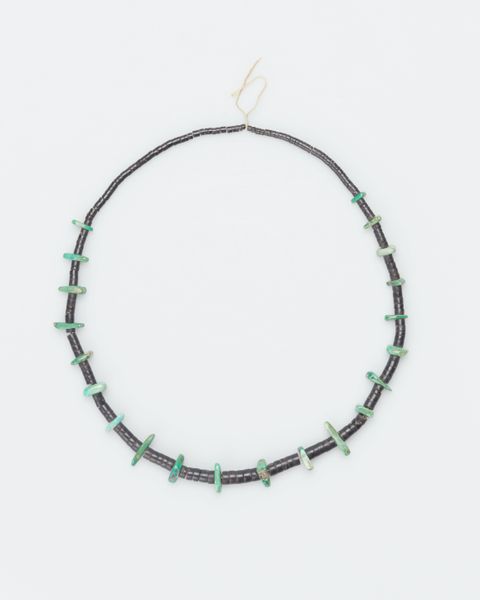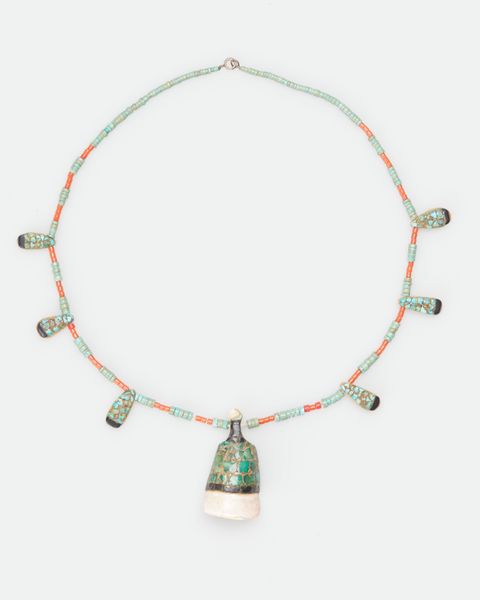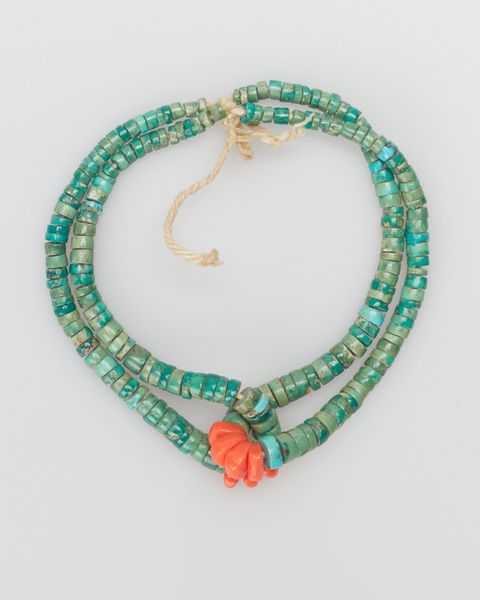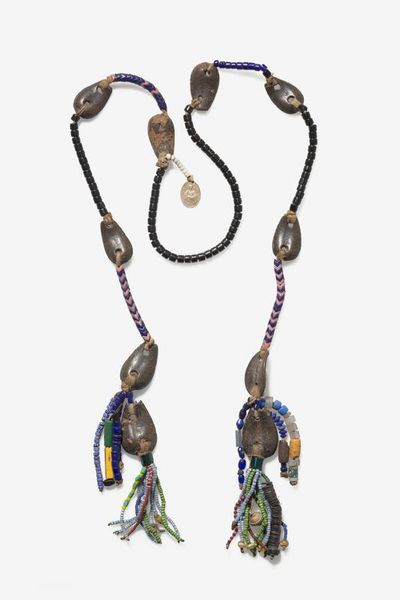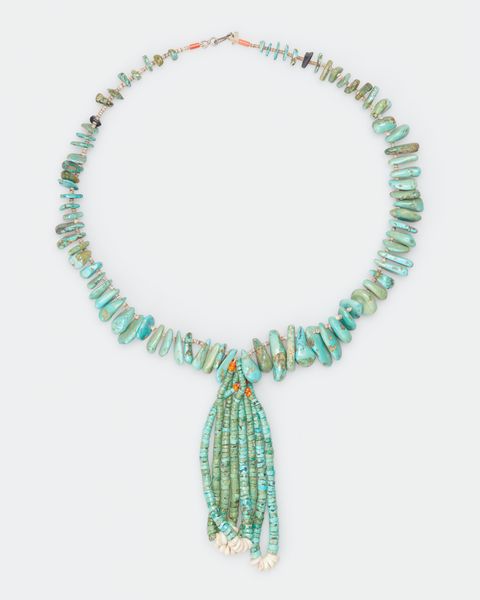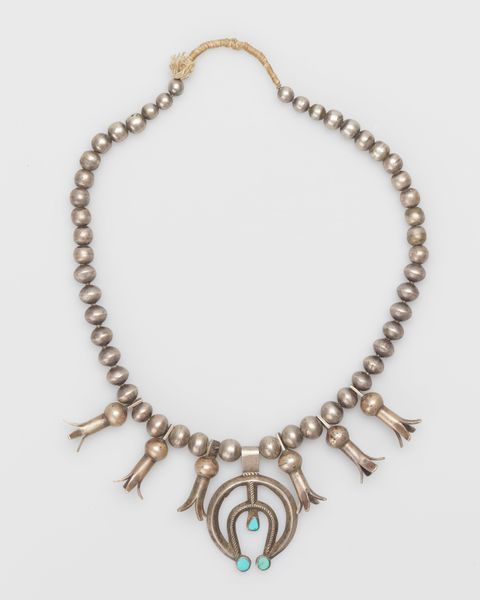
Woman's neck ornament with medallion (shitoki) c. late 19th century
0:00
0:00
assemblage
#
assemblage
#
asian-art
#
jewelry design
#
japan
#
decorative-art
Dimensions: 21 1/16 × 7 in. (53.5 × 17.78 cm)
Copyright: Public Domain
Editor: So, this is a woman’s neck ornament with a medallion, a "shitoki," from Japan, probably late 19th century. Looking at it, the combination of the dark beads with those bright turquoise ones gives it a really striking look. What do you see in this piece? Curator: I see layers of cultural memory embedded within these contrasting colours and forms. The circular medallion, a prevalent symbol across cultures, speaks of cycles, of wholeness. But here, the dark perimeter edged with floral ornamentation hints at ephemerality, like the fleeting beauty of blossoms. Editor: I hadn’t thought of the flowers in that way. I was just seeing them as decoration. Curator: And the central metallic disk, punctured with three repeating shapes... Those aren't mere decorations either. Do they evoke any particular feeling, any specific symbolic associations, perhaps of celestial bodies, trifectas, or perhaps, ancestral relationships? Editor: Celestial bodies maybe. They look a bit like stars, or even mirrors. Is it common to use these kinds of symbols in jewelry? Curator: Precisely. Jewellery, especially when worn close to the body, serves as a potent visual language. Materials are rarely selected without thought. That’s why these materials are important too. Consider the colour choices in the beads: blue juxtaposed with black... perhaps mirroring sky and the depths. Editor: It makes you wonder what the wearer wanted to express. It’s almost like a coded message. Curator: Exactly! It suggests both social identity and personal aspirations; aspirations toward something perhaps unreachable in life itself. Thank you, this has provided new avenues of inquiry for me! Editor: This piece is so much richer now. I really appreciate you sharing your knowledge about it.
Comments
minneapolisinstituteofart almost 2 years ago
⋮
On ceremonial occasions, Ainu women wore necklaces (tamasay) made of glass beads. While fashionable, the necklaces also were believed to offer the wearer spiritual protection. The beads could have originated from Russia, China, or even Central Asia; medallions (shitoki) were imported from China and Japan. Highly treasured, especially those with medallions, these necklaces were passed down from generation to generation. Likely made by Japanese craftsmen, this medallion is decorated with floral motifs—encircled triple hollyhock in the middle and bamboo leaves with gentian flowers on the rim—that are typical family crests in Japan.
Join the conversation
Join millions of artists and users on Artera today and experience the ultimate creative platform.
